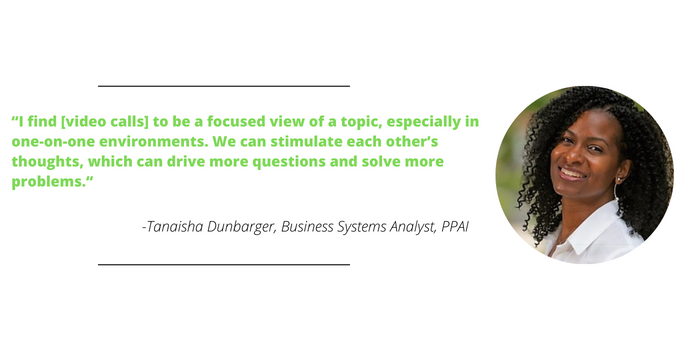Using Work-From-Home Tech Efficiently

It’s no big revelation that the modern work landscape has changed dramatically since 2020. The advent of work-from-home arrangements has transformed the way we work, and technology plays a pivotal role in making this shift possible.
As the global workforce continues to embrace remote work, it’s crucial to harness technology efficiently to maintain productivity, communication and work-life balance. That technology is here to stay, and the smartest companies are using it in some capacity to help employees communicate in ways that are both convenient and efficient.
Speaking as a business systems analyst, I’ll admit that there are plenty of projects in which my preferred work environment is remote, away from the office. That’s to say nothing of the debate between colleague camaraderie versus cutting down on commute times; both arguments have plenty of value. But I’m referring to efficiency, productivity and mitigating errors.
Let me explain.
Often my interactions with colleagues, especially when I’m in the “requirements gathering” phase of a project, boils down to a lot of scrolling through systems with them. I’m watching them click through different screens. But it’s not passive watching. I need to be very attentive, as they are also verbalizing their processes.
When working in the office, the most natural approach is to stand over or sit near my colleagues as they work through the system. In a remote scenario, the colleague shares their screen with me. I find this is a more effective approach. There are less distractions on my end, and my colleague is able to click through the system more naturally, as they would on their own. Screen sharing allows me to see the system – and a common approach – through my colleague’s eyes.
Now, if you are operating from a work-from-home or hybrid environment, a number of practices should be put in place to ensure that the team remains organized. My team does a weekly status call. That’s just checking in with everyone to hear their statuses and roadblocks. Both progress and setbacks to a project could occur in a week’s time, and you want to stay on top of those developments.
We also have a “technology roadmap” meeting where we discuss the details of upcoming projects as they relate to our organization objectives, things that are in the pipeline, their impact on the organization and so on.
These are not things that require sitting in a room together with a whiteboard. There are apps for that.

So, let’s talk about basic communications.
I get quite a few “simple, quick” questions from colleagues. If the question pertains to a specific project, I prefer to initiate a quick video call if possible. It might seem like overkill, but typically, that one “simple, quick” thing is anything but once you start really digging and fleshing it out. One misconception might be rooted in a larger misconception, and five minutes to achieve clarity can save a lot of time down the road.
As I mentioned before, I like video calls for these purposes. I find them to be a focused view of a topic, especially in one-on-one environments. We can stimulate each other’s thoughts, which can drive more questions and solve more problems.
When the question pertains to a day-to-day or “keep the lights on” issue, typically, a quick chat through Microsoft Teams or Slack can be perfectly suitable. There’s a big caveat, however. When it comes to those daily issues, I would prefer that the questions be tracked or logged for reference through our ticketing system. That information can later be used for metrics and possibly highlight bigger issues that need to be remedied.
More importantly, managing chat interactions is a huge factor as it relates to efficiency. If you are not mindful, chat can prove to be a major distraction.
Efficiently using work-from-home technology is essential for remote workers and organizations. By leveraging collaboration and communication tools and staying organized with time management solutions, remote work can be as productive as working in a traditional office. Embrace the power of technology to make the most of the work-from-home revolution and achieve a healthy work-life balance.
Dunbarger is PPAI’s business systems analyst.

